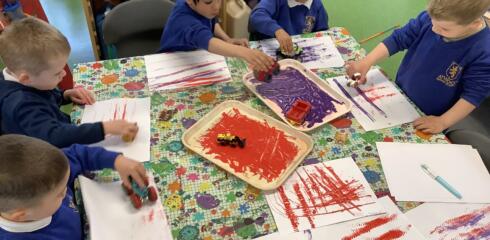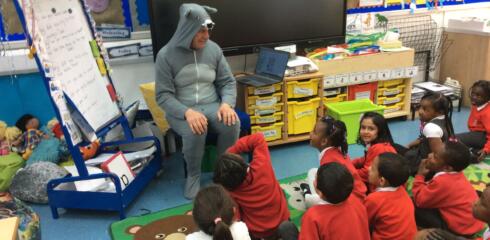A little while ago, I promised that I would write a half termly article focusing on mental health and wellbeing as this aspect of our everyday lives is so important to us all leading a happy and rewarding life. But as with everything in life, there is so much information about mental health and wellbeing that it can be very hard, especially for children, to know where to start, hence me picking some good ways for us all to boost our mood and to promote positivity.
The Joy of Colour
Have you ever found yourself pining for a red juicy apple? Do you feel refreshed when you walk through a green forest in spring? Or perhaps you’ve taken a photo of a beautiful sunset while on holiday? We are surrounded by different colours and often take them for granted as we are all so busy, or spend too much time in front of a screen. Colours are often linked to experiences, feelings and memories. Finding the shades that make you happy and bringing these into your life can boost your wellbeing, especially during the darker winter months.
The benefits of colour
‘Colour is a great way to express yourself’ says colour expert Karen Haller. Whether it’s your clothes, hair, nails or wallpaper, colour is a tool to show your personality. Mrs Lawrence springs to mind as she wears such lovely bright colours, she brightens everyone’s day. Colours can soothe or excite people. The use of bright colours, instead of black and white, can even help you concentrate and remember information more easily.
What colours can help improve my mood?
Your colour likes and dislikes are very personal and there’s no right or wrong answer when it comes to choosing your colour. Research has shown that your attitude colour is linked to your emotions and experiences- for example, many people love the colour blue because it reminds them of the sea. To work out which colours spark joy in you, maybe pull out one of your favourite colouring pencils and see which colour you like the best.
How does colour help wellbeing?
Once you’ve worked out the colours you find uplifting, choose how you’d like to add these to your life. Perhaps it’s in your artwork or the choice of clothes that you wear, or the colour of your bedroom if you are allowed to choose. You could pay more attention to these positive colours when you’re out and about, or create a mood board and look at it if you are not feeling so great.
What is colour?
Each colour has a wavelength. The colour red has the wavelength (740-625 nanometers) and violet has the shortest (435-380 nanometers). Children, maybe a way of remembering this, is that red comes first in the rainbow spectrum and violet comes last. When light hits an object, the colour we see is the wavelength it reflects. So a lemon reflects yellow light, but absorbs the other colours of the rainbow spectrum. If all the colours are absorbed, that’s when we see black.
:max_bytes(150000):strip_icc()/the-visible-light-spectrum-2699036_FINAL2-c0b0ee6f82764efdb62a1af9b9525050.png)
Mood and Colour
RED- Energy. Helps to excite and motivate you.
ORANGE- Playfulness. Represents fun.
YELLOW- Hope. Welcoming and warm like sunshine. It helps you think positively.
GREEN- Safety. Linked to nature, can make you feel safe.
LIGHT BLUE- Calm. Helps clam your mind.
DARK BLUE- Focus. Can help you concentrate.
















